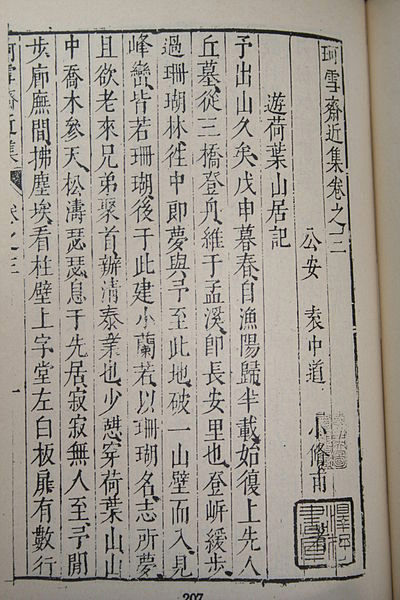 Poets were held in high esteem in the Ming Dynasty. Poetry was a flourishing art during the Ming period. They wrote skillfully on almost every topic under the sun – nature, philosophy, relationships, sight and sound, etc. Many of them used ‘Confucian thought’ as their guiding principle. The only topics which were taboo were poetry against the Emperor or State; these would get the poet into hot water very quickly.
Poets were held in high esteem in the Ming Dynasty. Poetry was a flourishing art during the Ming period. They wrote skillfully on almost every topic under the sun – nature, philosophy, relationships, sight and sound, etc. Many of them used ‘Confucian thought’ as their guiding principle. The only topics which were taboo were poetry against the Emperor or State; these would get the poet into hot water very quickly.
Some of the famous poets of the Ming era were: Gao Qi, Yuan Zhondao, Yuan Hongdao, Wang Wei, and Ou Daren.
Gao Qi
Regarded as one of the finest poets of the Ming era. He lived during the fall of the Yuan Dynasty and the rise of the Ming. The Emperor offered him a post as deputy finance minister, but he did not accept because he was not well versed in economics. Later in life the Emperor accused him of conspiracy involvement and executed him for non-cooperation.
Yuan Zhongdao
Was born in Hukuang and in addition to poetry, he was an essayist and travel diarist too. He came from a family of means, but illness was prevalent in their family line. Yuan Zhongdao later became troubled by tuberculosis. Sickness would become the background for his preoccupation with healthy and stress-free living.
Yuan Hongdao
He was one of the three Yuan brothers and came from a family of military officers. In 1592, Yuan Hongdao passed the civil service examination; he was 24 at the time. He was granted an official position but left after a year of boredom.
Wang Wei
Was a woman poet during the Ming Dynasty. After being twice widowed, she became a priestess named “Taoist Master in the Straw Coat.” She wrote poems celebrating nature.
Ou Daren
Was a Ming scholar who came from the Guangdong province. He was appointed as a civil servant. He was well known for his poetry.
Many of the poets in the Ming era achieved fame. They came from a variety of backgrounds. Some had regular government posts. Others just wondered around, putting ‘quill’ to whatever caught their fancy. They left behind a fascinating insight into the Ming era.